- Home
- John Harris
The Cross of Lazzaro
The Cross of Lazzaro Read online
Copyright & Information
The Cross of Lazzaro
First published in 1965
Copyright: Juliet Harris; House of Stratus 1965-2011
All rights reserved. No part of this publication may be reproduced, stored in a retrieval system, or transmitted, in any form, or by any means (electronic, mechanical, photocopying, recording, or otherwise), without the prior permission of the publisher. Any person who does any unauthorised act in relation to this publication may be liable to criminal prosecution and civil claims for damages.
The right of John Harris to be identified as the author of this work has been asserted.
This edition published in 2011 by House of Stratus, an imprint of
Stratus Books Ltd., Lisandra House, Fore Street, Looe,
Cornwall, PL13 1AD, UK.
Typeset by House of Stratus.
A catalogue record for this book is available from the British Library and the Library of Congress.
EAN ISBN Edition
0755102282 9780755102280 Print
0755127382 9780755127382 Mobi/Kindle
0755127668 9780755127665 Epub
This is a fictional work and all characters are drawn from the author’s imagination.
Any resemblance or similarities to persons either living or dead are entirely coincidental.
www.houseofstratus.com
About the Author
John Harris, wrote under his own name and also the pen names of Mark Hebden and Max Hennessy.
He was born in 1916 and educated at Rotherham Grammar School before becoming a journalist on the staff of the local paper. A short period freelancing preceded World War II, during which he served as a corporal attached to the South African Air Force. Moving to the Sheffield Telegraph after the war, he also became known as an accomplished writer and cartoonist. Other ‘part time’ careers followed.
He started writing novels in 1951 and in 1953 had considerable success when his best-selling The Sea Shall Not Have Them was filmed. He went on to write many more war and modern adventure novels under his own name, and also some authoritative non-fiction, such as Dunkirk. Using the name Max Hennessy, he wrote some very accomplished historical fiction and as Mark Hebden, the ‘Chief Inspector’ Pel novels which feature a quirky Burgundian policeman.
Harris was a sailor, an airman, a journalist, a travel courier, a cartoonist and a history teacher, who also managed to squeeze in over eighty books. A master of war and crime fiction, his enduring novels are versatile and entertaining.
One
If he hadn’t been there – personally – Henry Chappell would never have believed it. But he saw it with his own eyes – coming up through the drifting rain like the miracle they later tried to say it was.
He was standing with Caporelli on the slopes above the lake where they could see both the town and the dam. Cadivescovo lay just below them, a collection of wooden and stone buildings round the Church of Lazzaro di Colleno, full of narrow streets and flowered balconies with Gothic lettering and dark frescoed arcades. It was a narrow little town of carved doorways and decorated shutters, its thick roof-tiles weighted by stones against the sudden winds that could blow down the Val Caloroso off the Catena di Saga; sited where the Latin and German cultures of the South Tyrol overlapped, and still more Austrian than Italian, its roots way back in a culture from which it had been wrenched in 1918 when it had been ceded with the rest of Trentino to Italy. Beyond it, the water of Lake Colleno was the silver-grey of steel, flat calm and stretching across to the misty fangs of Monte Cano at the other side, half hidden in cloud – standing among the slender spires and imposing towers of the Cano massif like a rampart above the meadows.
But there was no mist over Cadivescovo and the water that morning. The drizzle was lifting gently on the breeze, falling across the lake, it seemed, in ripples – almost like the shot silk of corn in a summer wind. Overhead, a hawk was circling slowly on curved wings and, below, the Citta di Trepizano, the lake ferry, was just coming into Cadivescovo from Trepizano at the other side where the houses speckled the shadowed mountainside. A few tourist cars stood alongside the pier where the ancient high-funnelled ship called, and a few more were jockeying for places on the narrow Via Colleno that ran round the lake from Trepizano. But not very many, because the unsettled weather was still keeping them at home and the season hadn’t been going long. The geraniums packed on to the balconies of the public buildings were still in bud and the painters were still busy picking out in black paint the sharp-edged words carved lovingly into the facades of dwelling houses – Klein aber Mein, and other such sentimental mottoes. Even the brass band that had been playing waltzes in the Piazza della Citta beneath the statue of the Tyrolean patriot, Andreas Hofer, had looked stiff and uncomfortable in uniforms only recently taken from camphor-smelling oak chests and from behind cottage doors.
The water of the lake was clear and still, except in front of the Punta di Vescovo where they’d been exploding small charges in the water. There was still a flurry over the surface round the cluster of boats where they’d detonated the last one. They’d been at it for weeks, Caporelli said. The European Universities Underwater Exploration Group, they called themselves, though they were mostly English, with an odd Frenchman or American or German or Italian, and they’d been looking for the lost city of Arcuneum most of the summer. Two or three of them were standing at that moment on the beach near the mounds that marked all that was known of the ancient city, pacing out the distance with tapes.
From where he stood with Caporelli, Henry could see the remains quite distinctly. Cadivescovo had once been known as Arcono and before that as Arcuneum until an earthquake had submerged it beneath the lake in the year AD 547. A mediaeval castello stood near the dug-out ruins of a Roman fort and it was possible to make out quite easily how the straight muddy mounds just below the surface of the water connected with the earthworks. It was clear there had been a city there, but archaeologists had been searching on and off for forty years without ever discovering anything beyond a suggestion of a broken wall.
Another small explosion in the shallows threw up water in a low mushrooming heave on the surface of the lake, rather like a small depth-charge, and they could see the archaeologists – mostly students and members of skin-diving clubs who enjoyed the adventure of swimming below water as much as the search for archaeological treasures – lining the sides of the boats, peering downwards, rather as though they expected to see fragments of statuary come floating to the surface.
Caporelli shook his head and lit a cigarette.
‘They’ll never find Arcuneum that way,’ he said. ‘They’ll have to find the remains of Bishop Lazzaro’s barge first. It’s down there somewhere.’
‘Why?’ Henry asked. ‘Why there?’
Caporelli shrugged. ‘He was Bishop of Colleno,’ he said, ‘and he founded a monastery at Arcuneum. When the town disappeared in the earthquake he came to see what he could do for the survivors. Unfortunately there was a storm.’
‘And?’
‘And the barge was a bit top-heavy. He always had a great wooden cross on the bow to warn the Barbarians of the wrath of God. So! It capsized and in the rush no one thought to rescue Lazzaro. Hence Cadivescovo. Casa di Vescovo. The home of the Bishop.’
And Punta di Vescovo, Henry thought. And Via Vescovo and Piazza Vescovo. Everything about the place was redolent of the life of the dead Bishop. Ninety per cent of the wood-carvings done in the town and by the shores of the lake and half the paintings daubed by the artists struggling to make a living in Madonna del Piano on the hill were of Bishop Lazzaro’s death.
‘The way they’re going on,’ Henry commented, ‘they’ll have blown the barge to bits before they find anything.
’
Caporelli turned and smiled, small and squarely built before Henry’s lankiness, thick-necked and earthy-looking against Henry’s lean scholarliness.
‘Dr Cappell–’ he began.
‘Chappell,’ Henry corrected him, and he smiled and nodded.
‘Of course,’ he agreed. ‘Shappell! They say, Dr Shappell, that Lazzaro’s cross marks the site of the city and that when Lazzaro decides it’s time to discover Arcuneum he’ll give a sign.’
‘Sign?’
Caporelli gestured. ‘If I didn’t know he was in the crypt of the Church of Lazzaro di Colleno,’ he said, ‘I might expect them to blow him to the surface with their explosives.’
‘Why explosives?’ Henry asked, staring downwards. ‘It’s a funny tool for an archaeologist to use.’
‘They’re very good at it,’ Caporelli pointed out, a note of respect in his voice. ‘I know. I was a partisan, wasn’t I? I used to use explosives a lot myself. Plastic in small cans. That’s what they’ve got. Pentolite or hexogen. It’s very well restricted. They fire them with a car battery.’
‘But why?’
Caporelli grinned, and indicated the stream that ran down the mountain over its bed of multi-coloured granite and Dolomite pebbles, past the carved crucifixes that were a reminder of the Catholic faith in an area that had been part of the Holy Roman Empire for a thousand years. They could just see where it entered the lake in a brown cloud of mud which the rain had washed off the mountain.
‘The water has piled soil and gravel where they think the walls are,’ Caporelli said. ‘It’s formed a hard crust. They decided that small planted charges dug into it would loosen it enough for them to wash it away with pressure hoses. They will then find Arcuneum – they hope.’
‘And when they do?’
‘Ecco!’ Caporelli grinned again. ‘Another Pompeii!’
He came towards Henry and leaned on the wall alongside him, peering over it towards the lake. His manner seemed flashy against the reserve of the taller, fairer Northerners of Trentino. He was a Neapolitan in his early fifties and to Henry’s certain knowledge, before becoming a soldier and finally a hotelier, he’d studied engineering and medicine. He was a long-nosed, broad-shouldered bull-terrier of a man with a dry sense of humour, curiously unemotional for a Southerner, perhaps because he’d spent some years in America and had even hawked plaster saints among the devout Irish in Dublin.
His hotel, the Stettnerhof, as it had still remained across the years in spite of Mussolini’s insistence on the use of Italian in Trentino, standing on its little ridge of rock above and outside the town, was the best on Lake Colleno. The Underwater Exploration Group had made it their head-quarters and filled the bar below the gilded Austrian eagle every night, arguing and quarrelling among themselves as they grew more despondent at their failure to find anything exciting.
‘I often wonder,’ he said, pointing downwards in the direction of the old round hump where the Roman fort had stood on the Punta di Vescovo, ‘why they always search there. Why do they always assume the old town ran from the fort towards Cadivescovo? It could just as easily have run the other way towards the Punta dei Fiori.’ He gestured towards the shallow end of the lake where the swallows whirled in graceful arcs over the reedy patches of marshland. ‘After all,’ he went on, ‘that’s where the stream came out originally, isn’t it? Down the Val Caloroso and into the lake there – before they built the dam and drove it through Cadivescovo.’
Henry turned from the wall and stared behind him at the dam, a tall, thoughtful-looking man with an intelligent precise manner. He could see the dam round the shoulder of the mountain, grey and gaunt and wildly out of place among those high Dolomite peaks above Lake Colleno. Even from where he stood he could see it was sway-backed in the middle, an ugly flat surface among the strange, beautiful rock spires of yellow and grey that were streaked like banners with black and purple and red.
‘Why did they build the dam and drive the water through the town?’ he asked.
Caporelli laughed. ‘Because the Von Benedikts, who were lords and masters of Cadivescovo, or Arzen, as it was then, didn’t like the drive round the lake to the other bay when they could just as easily put up the saw mills here in Arzen. So they built the dam and stopped up the stream.’ He indicated the barrack-like structure near his hotel. ‘That’s the saw mill there. It’s the Orphanage of St Francis now. When it happened the village by the Punta dei Fiori became deserted and vanished, and everyone came here to Arzen, and the water was directed down an artificial channel through the town. That’s what brings the mud down they’re trying to get rid of.
‘It’s full of mud now. The walls have fallen in and it’s all overgrown. If the water had to come down that way now it’d flood the town. Blame it all on the Von Benedikts. They built it.’ He caught the look on Henry’s face and frowned. ‘Why?’ he asked. ‘Something wrong?’
Henry rubbed his nose and glanced up at the dam again. ‘Well,’ he said, ‘your friend Von Benedikt didn’t know it then, but he was very probably building a bomb. That dam’s lethal now.’
A flicker of anxiety sped across Caporelli’s face. ‘Lethal?’
‘It should be strengthened,’ Henry said. ‘I can see it from here. I’ll bet the blasted thing’s sprouting leaks like a colander.’
He fished in his pocket and, producing his glasses, he put them carefully on his nose and glanced at the notebook in his hand. He had the whole history there, taken from the thick file Caporelli kept in his office. The dam that old Von Benedikt had built had been nothing originally but an earth wall, but as the saw mills in Cadivescovo had grown bigger and bigger, so had the dam been pushed higher and higher, and wider and wider, with more thought to increasing the output of the mills than to the safety of the town. It was now nine hundred feet wide and two hundred feet thick at the base. There was a road running along the rim, though it hadn’t been used by anyone except the mountain people for donkeys’ years. The grey wall, which had been added to strengthen it in the nineties, rose a hundred feet over the artificial stream bed that Von Benedikt had had dug and to which it was anchored.
Caporelli was squinting upwards at the dam, too, now, following Henry’s eyes. ‘It was the winter,’ he said slowly. ‘It was quite a winter here.’
‘It was quite a winter in England.’
‘The frost got into it. It opened it up. Nothing’s been done to it since 1920 when the government took it over.’
‘Why did they take it over?’
Caporelli grinned. ‘A lot of strange things happened here in 1919 and 1920 when the Alto Adige was becoming Italian,’ he said. ‘Everybody was still in the process of changing nationalities and people took advantage of the language problem here on the lake. There was a lot of political unrest.’
‘There still is,’ Henry reminded him gently. ‘They’re still blowing holes in the railway. I was held up myself on the way here.’ He stared upwards, his eyes narrow. ‘Why the hell didn’t they do something about it?’ he asked.
Caporelli shrugged. ‘Because Mussolini was too busy rebuilding the Italian state,’ he pointed out. ‘We’d been cold-shouldered at Versailles, and Italy was anxious to prove she was as good as anybody else. It was more important to build monuments to Italian glory than to restore an old dam which nobody ever saw. After all, it had functioned perfectly well for sixty years.’
‘It won’t function much longer,’ Henry said shortly. ‘I’d say there are nearly two million tons of water behind that wall. Doesn’t everyone down in Cadivescovo feel as though they’re living under a rickety water tower that’s going to burst its seams? If it went it’d be like Niagara pouring down the valley for twenty minutes. It’s five hundred feet higher than the town. Nearly two hundred metres. That’s a hell of a drop.’
‘OK, I know,’ Caporelli said, his face hardening. ‘Give me a chance. I’ve only had this thing in my lap for a fortnight – this year. Sister Ursula from the Orphanage was the first to notice it
. They take the children picnicking up there and one of them pointed it out to her. She saw it was different from last year.’ He paused and looked squarely at Henry. ‘Tell me, what do you think about it – truly?’
‘I’ve only just seen it,’ Henry said. ‘I’ve not had time to form an opinion.’
‘You stayed here last year – in my hotel. That’s why I remembered you when I wanted advice.’
‘I was on holiday then.’ Henry gazed up at the dam again, speculatively. ‘I’ll have to check closer.’
Caporelli looked disappointed. ‘You won’t commit yourself?’
‘I’ve only just arrived. You dragged me up here almost before I could draw breath.’
Caporelli shrugged. ‘OK,’ he said flatly. ‘I must wait. Will it burst this year, that’s all?’
‘Dams don’t burst these days. We stop them in time.’
‘That’s what everybody says to me. But it’s not really true.’
He was quite right, of course, Henry knew, but no engineer worth his degree could panic over possibilities.
‘I’ll have to check,’ he said again.
Caporelli pulled a wry face. ‘OK,’ he said. ‘I understand. I just wanted something to offer to the Provincial Council, that’s all.’
‘I can’t give you anything – not yet.’
Caporelli smiled. ‘Dr Cappell, you don’t give much away, do you? Just tell me this, though – is the town in danger?’
Henry shrugged. ‘The Tower at Pisa’s been leaning for centuries.’
‘It’s in danger of falling now, I hear. What about the dam?’
‘It needs repairing.’
Caporelli banged his fists together. ‘I want more than that, Dr Cappell,’ he insisted. ‘I have got to persuade them to spend money on it that they haven’t got. Even emptying it costs money.’

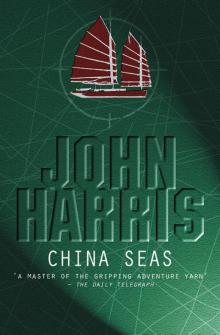 China Seas
China Seas The Mercenaries
The Mercenaries Road To The Coast
Road To The Coast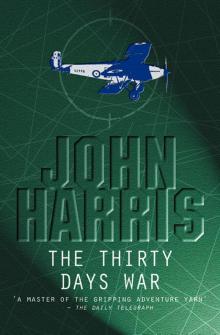 The Thirty Days War
The Thirty Days War The Old Trade of Killing
The Old Trade of Killing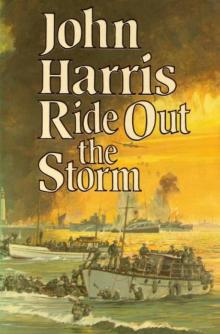 Ride Out The Storm
Ride Out The Storm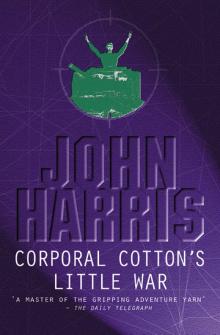 Corporal Cotton's Little War
Corporal Cotton's Little War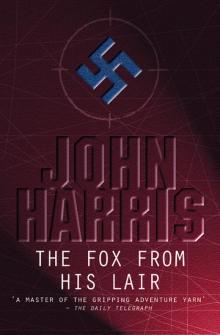 Fox from His Lair
Fox from His Lair Paint The Rainbow
Paint The Rainbow Flawed Banner
Flawed Banner Covenant with Death
Covenant with Death So Far From God
So Far From God The Sea Shall Not Have Them
The Sea Shall Not Have Them The Cross of Lazzaro
The Cross of Lazzaro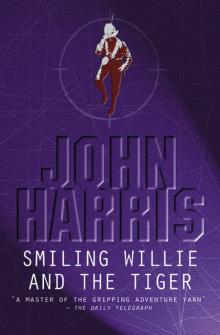 Smiling Willie and the Tiger
Smiling Willie and the Tiger Harkaway's Sixth Column
Harkaway's Sixth Column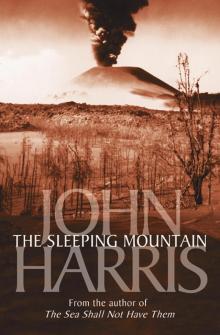 The Sleeping Mountain
The Sleeping Mountain The Claws of Mercy
The Claws of Mercy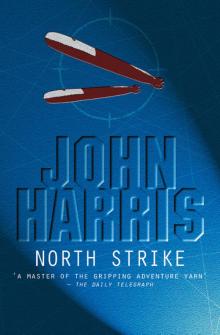 North Strike
North Strike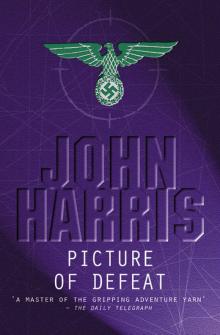 Picture of Defeat
Picture of Defeat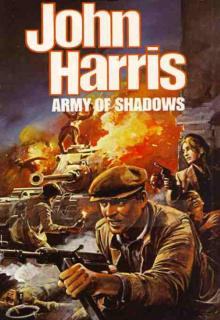 Army of Shadows
Army of Shadows Right of Reply
Right of Reply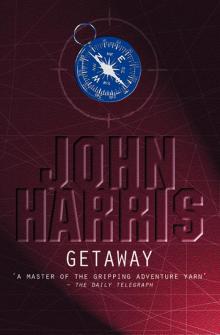 Getaway
Getaway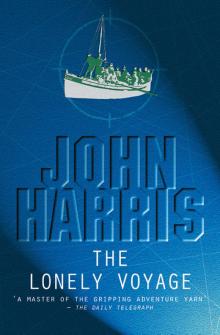 The Lonely Voyage
The Lonely Voyage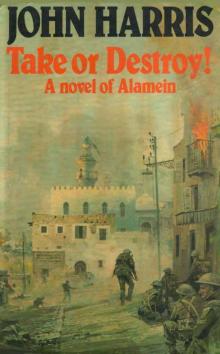 Take or Destroy!
Take or Destroy! The Backpacker
The Backpacker A Funny Place to Hold a War
A Funny Place to Hold a War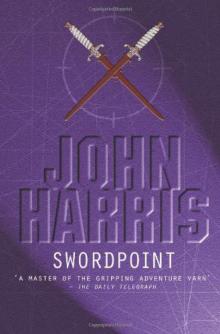 Swordpoint (2011)
Swordpoint (2011)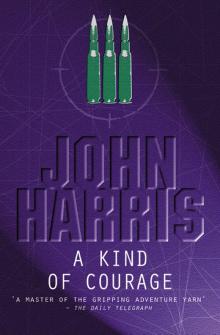 A Kind of Courage
A Kind of Courage